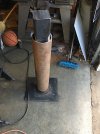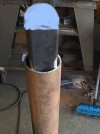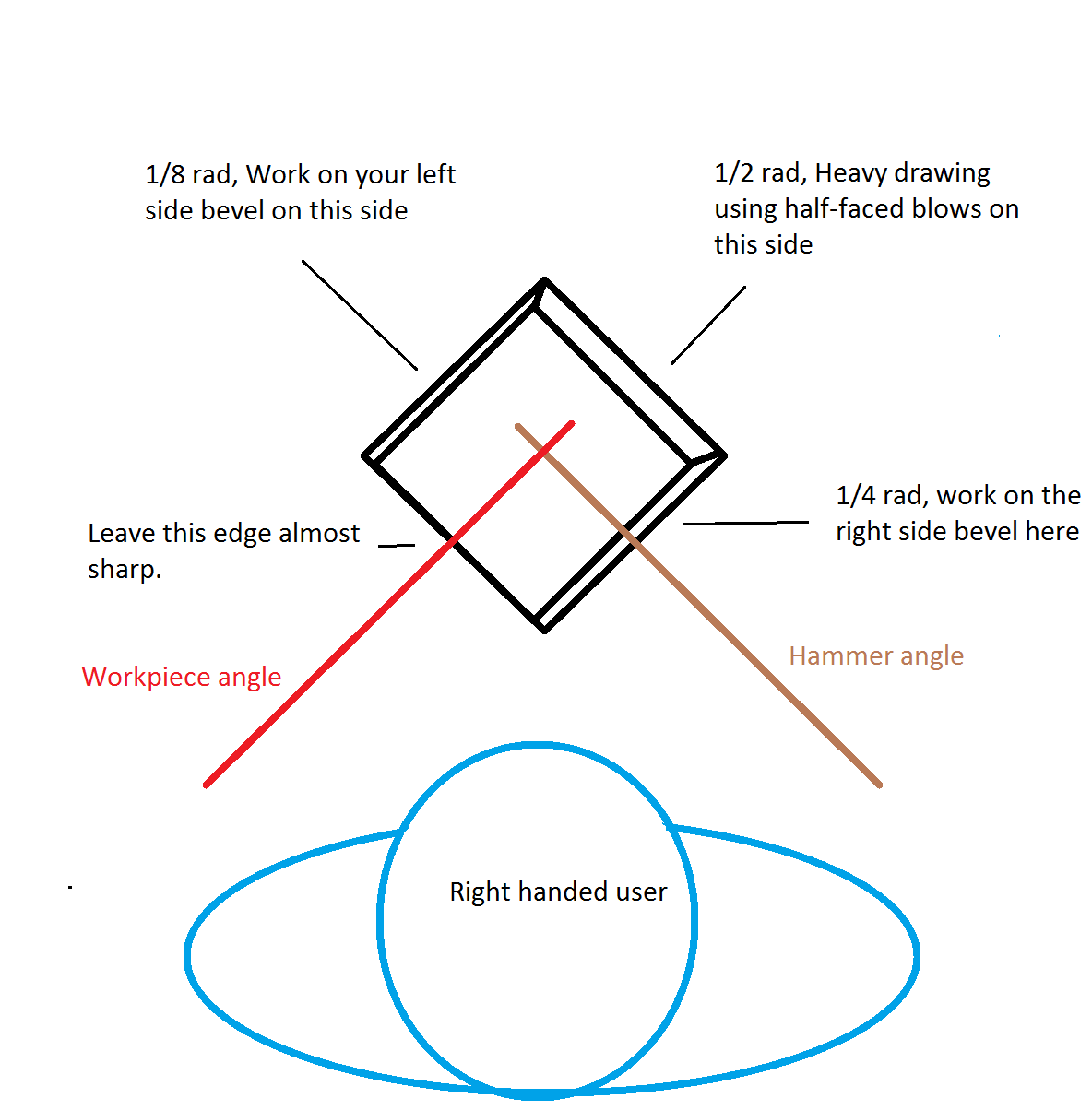- Joined
- Jan 1, 2017
- Messages
- 52
Those are striker anvils, used with a striker or striking team. They are usually set much lower to accommodate two-handed sledges. They use A36 or 1020-24 mild steel for safety, in case of a missed strike. Ever hit a hardened anvil with a heavy blow? I have... just about sent the hammer to the ceiling. Not to mention high-speed shards if the hammer or anvil chip.
My post anvil is not hardened and I like it like that. It might not return as much energy but it is really quiet and easy to dress.
I would say that concrete in a power hammer shouldn't be a problem as long as the anvil/die base is welded on top.
My post anvil has reinforced concrete in it. I suggested to Josh that sand would be a good alternative until he settles on a workface height.
I've worked as a blacksmith for almost 35 years so am familiar with hard striking faces - my only point in posting was to offer alternate suggestions.



